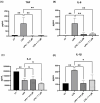Design and Synthesis of Boronic Chalcones with Dual Anticancer and Anti-Inflammatory Activity
- PMID: 40733296
- PMCID: PMC12301034
- DOI: 10.3390/molecules30143032
Design and Synthesis of Boronic Chalcones with Dual Anticancer and Anti-Inflammatory Activity
Abstract
Head and neck cancer (HNC) is a highly aggressive malignancy with limited treatment options and poor prognosis. Inflammation plays a critical role in HNC progression, with elevated levels of pro-inflammatory cytokines such as TNF, IL-6, IL-8, and IL-1β contributing to tumor development. In this study, a novel series of boronic chalcones was designed and synthesized as potential dual-action anticancer and anti-inflammatory agents. The most potent compounds were evaluated for their cytotoxicity against Squamous Cell Carcinoma (SCC-25), and their selectivity index (SI) was determined. Compound 5 emerged as the most promising, displaying cytotoxicity against cancer cells, with IC50 values of 17.9 µM and a favorable SI (>3). Mechanistic studies revealed that its anticancer activity was independent of p53 status, and annexin V/PI staining indicated cell death via necrosis. Interestingly, compound 5 also significantly reduced pro-inflammatory cytokine levels, as TNF and IL-6. Furthermore, drug metabolism and pharmacokinetics (DMPK) studies demonstrated that compound 5 exhibited moderate solubility and high permeability. These findings underscore the crucial role of the boronic acid moiety in enhancing both anticancer and anti-inflammatory properties.
Keywords: anti-inflammatory; boronic acid; chalcones; head and neck cancer.
Conflict of interest statement
The authors declare no conflicts of interest.
Figures





Similar articles
-
Biological and In Silico Studies of a Novel Pyrazolo[3,4-d]Thiazole Derivatives: Anticancer, Anti-Inflammatory, Molecular Docking, and SAR.Chem Biodivers. 2025 Jun;22(6):e202403173. doi: 10.1002/cbdv.202403173. Epub 2025 Feb 26. Chem Biodivers. 2025. PMID: 39921917
-
Systemic pharmacological treatments for chronic plaque psoriasis: a network meta-analysis.Cochrane Database Syst Rev. 2021 Apr 19;4(4):CD011535. doi: 10.1002/14651858.CD011535.pub4. Cochrane Database Syst Rev. 2021. Update in: Cochrane Database Syst Rev. 2022 May 23;5:CD011535. doi: 10.1002/14651858.CD011535.pub5. PMID: 33871055 Free PMC article. Updated.
-
Exploring Carboxamide Derivatives as Promising Anticancer Agents: Design, In Vitro Evaluation, and Mechanistic Insights.Int J Mol Sci. 2025 Jun 19;26(12):5903. doi: 10.3390/ijms26125903. Int J Mol Sci. 2025. PMID: 40565364 Free PMC article.
-
Novel benzenesulfonamides as dual VEGFR2/FGFR1 inhibitors targeting breast cancer: Design, synthesis, anticancer activity and in silico studies.Bioorg Chem. 2024 Nov;152:107728. doi: 10.1016/j.bioorg.2024.107728. Epub 2024 Aug 17. Bioorg Chem. 2024. PMID: 39178704
-
Systemic pharmacological treatments for chronic plaque psoriasis: a network meta-analysis.Cochrane Database Syst Rev. 2020 Jan 9;1(1):CD011535. doi: 10.1002/14651858.CD011535.pub3. Cochrane Database Syst Rev. 2020. Update in: Cochrane Database Syst Rev. 2021 Apr 19;4:CD011535. doi: 10.1002/14651858.CD011535.pub4. PMID: 31917873 Free PMC article. Updated.
References
MeSH terms
Substances
Grants and funding
LinkOut - more resources
Full Text Sources
Research Materials
Miscellaneous

